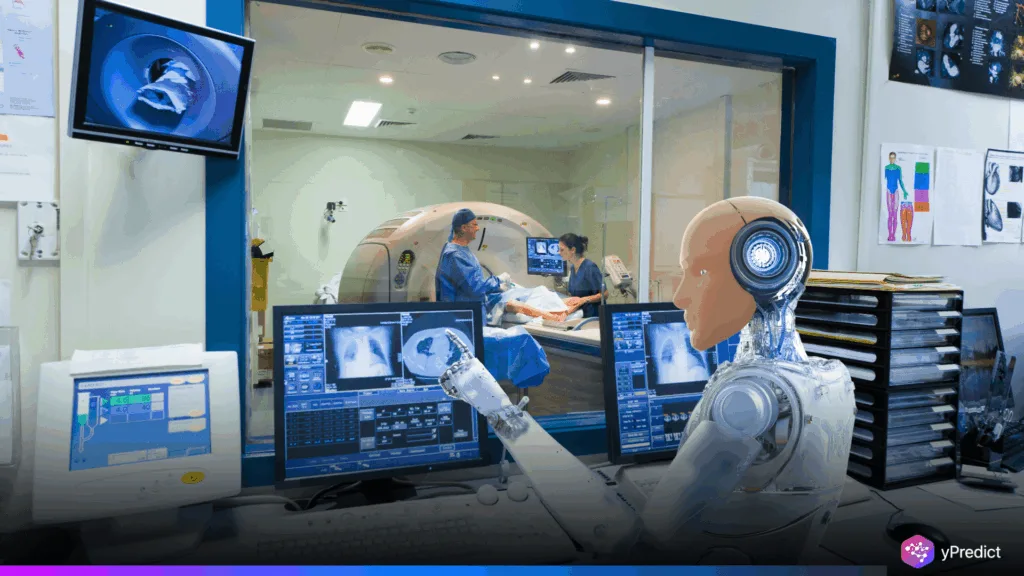
Chinese and Hong Kong researchers have developed a new AI cancer-scan tool called OMMT-PredNet. It makes cancerous lesion predictions with nearly instinctive precision. It detects cancer risk with an AUC of 0.959 and epithelial dysplasia with an AUC of 0.922. Thus, it makes use of patient data and high-resolution photos for detection. Furthermore, the fully automated, annotation-free model offers a revolutionary, non-invasive substitute for biopsy.
Inside the Engine of the AI Cancer-Scan
OMMT-PredNet is a deep learning framework that combines medical records and photographic lesion images. It was trained on 649 leukoplakia cases from different institutions, including 598 main cohort cases and 51 external validation cases. Furthermore, the model does not require manual region-of-interest marking to identify dysplasia or predict cancer risk.
Consequently, cancer is being precisely identified. Analyses of calibration and external validation confirmed its resilience. The AUC of 0.9219 for detecting epithelial dysplasia and 0.9592 for predicting cancer progression over time demonstrates its exceptional performance.
The model achieves high precision (~0.944 and ~0.930, respectively). Additionally, specificity is ~0.949 for malignant transformation and ~0.918 for dysplasia. These measurements attest to its high potential for regular use and clinical-grade accuracy.
Breaking Barriers with Non-Invasive Design
OMMT-PredNet marks a shift in cancer detection by avoiding invasive biopsies entirely. It removes annotations created by the user from standard high-resolution clinical photos and patient data. As a result, the tool expedites diagnosis and lowers expenses, which is crucial in situations where lab infrastructure is scarce.
Additionally, this system might make early oral cancer screening more accessible. The tool improves clinical workflows in addition to accuracy. It works end-to-end and does not require expert input on lesion boundaries.
Clinics can also use it with simple imaging equipment, which allows for better results and early intervention. Thus, its clinical decision-curve analysis and strong calibration further encourage its use.
The Journey Ahead For This AI Cancer-Scan
OMMT-PredNet is the most complete model to date, based on multicenter data from over 20 years of confirmed leukoplakia cases. Furthermore, its automated design and verified performance imply wide-ranging applicability in various care environments. Larger trials and integration with point-of-care devices could expand its impact and reach in future studies.
Could This Breakthrough Reshape Future Cancer Care?
OMMT-PredNet delivers a potent AI cancer-scan that is both accurate and useful, ushering in oral cancer risk assessment. It reduces the workload of both patients and physicians by eliminating biopsies and manual entry. This tool could save lives, reduce costs, and speed up therapy as it becomes increasingly used in clinical settings. Future research should examine teledentistry integration, wider validation, and portable versions. OMMT-PredNet may finally be able to match the scalpel.






